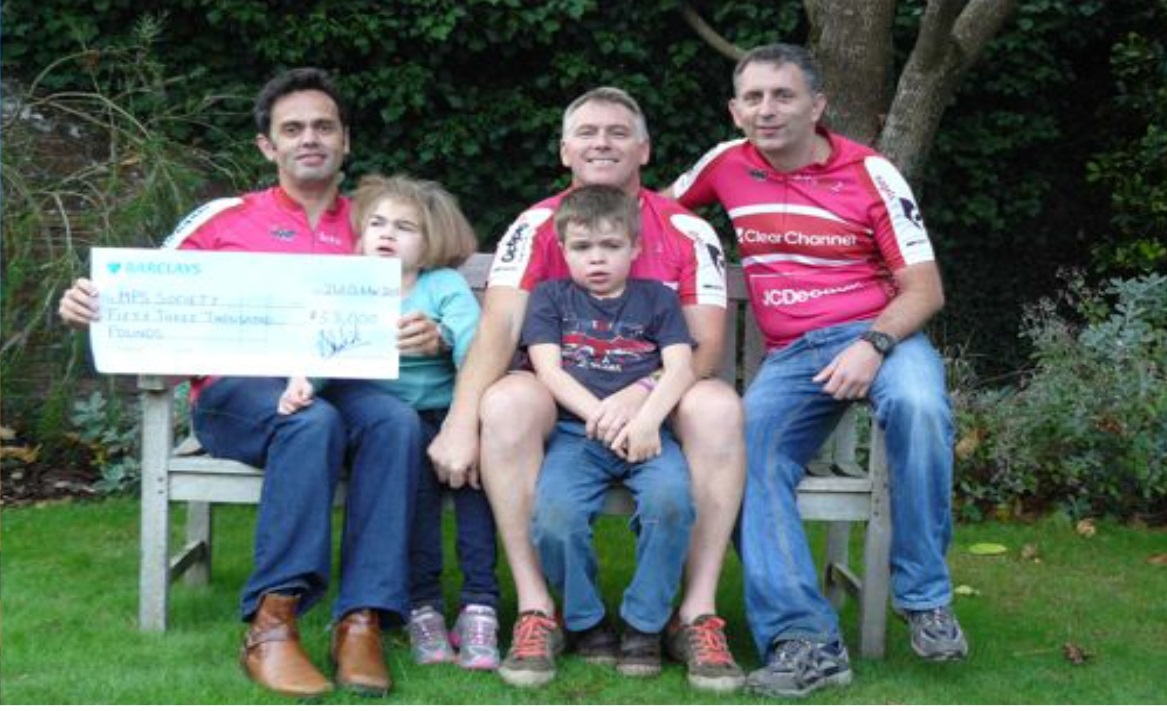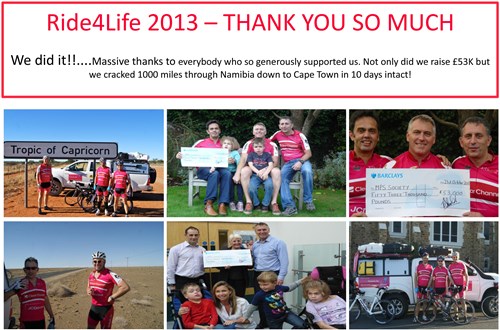
Three fathers recently rode a distance of 1600 km by bike from Windhoek, the capital of Namibia, to Cape Town, South Africa. They did this not for fun, but to raise awareness and money for research into Sanfilippo Syndrome - a terminal disease of children for which no cure has yet been found.
An appeal for funds was launched with the aim of collecting 50 Pounds for every kilometer that Paul, Tal and Roger rode through the empty desert world of Namibia where the temperature frequently reaches 40 degrees Celsius. Their aim was to complete the journey over nine days, riding for 6 to 8 hours over distances of up to 200 km each day.
Their efforts were well rewarded, because their goal was not only achieved, but exceeded in the end. Thanks to the great support of organisations, foundations, businesses and individuals, a total of 53,000 Pounds was collected. This has been donated to the MPS Society which is helping to fund cost-intensive research into therapies for Sanfillipo at the Royal Manchester Childrens Hospital.

The “Ride4Life” challenge has a serious, personal background for Paul. His children Sophie (10) and Tom (8) suffer from Sanfillipo and need urgent help from an effective treatment. Although his own children can no longer be helped, because the disease has progressed too far, Paul hopes that the research being done now will result in better healing opportunities for others in the future.
The Sanfillipo syndrome is a rare (1:30000) congenital, inherited metabolic disease that interferes with brain functions. The cause is not treatable at this time. It becomes apparent in affected children from the third to fourth year of life and is characterised first by delayed mental development and agressive or extremely restless behaviour. In the next decade, behaviourial disorders are increasingly replaced by a spastic paralysis, with loss of speech and comprehension. Swallowing disorders and epilepsies are common. There is so far no method of healing or treating Sanfillipo and patients do not usually live past their teenage years.
Written by Graham Shields
Website: http://www.sophieandtom.co.uk/



